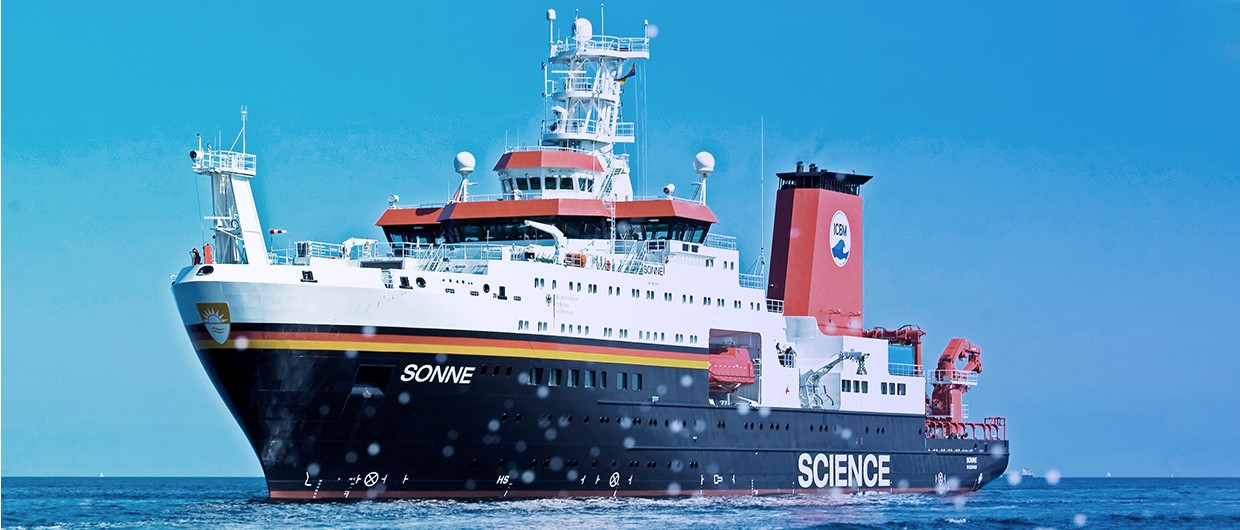Research Vessel “SONNE”
The “SONNE” is one of the most modern and best-equipped research vessels in the world. Angela Merkel even called it a “floating miracle” during its inauguration ceremony.
Its construction began on 4 December 2012 following a European tendering process won by Tiefseeforschungsschiff GmbH, a merger of the Bremen-based shipping company RF Forschungsschifffahrt and MEYER WERFT. The total costs amounted to 124.4 million euros: 90% was provided by the Federal Ministry of Education and Research (BMBF), while the north German states invested the remaining 10% together.
After almost one and a half years of construction work, the 116-metre-long and 20.6-metre wide SONNE was undocked and embarked on its first test runs in the North and Baltic Seas. It was then officially named in Rostock-Warnemünde by Angela Merkel on 11 July 2014.
The “floating miracle” has certainly lived up to its name. It’s particularly worth highlighting the engine room units, which are mounted in such a way that they hardly send any vibrations to the ship’s hull. This means the SONNE can travel quietly and without vibrations to avoid disturbing echo-sounding surveys. The deep-sea research vessel also features seven high-performance cranes, a diving robot and a pinpoint positioning system. The ship remains exactly in place during research operations thanks to its two large propellers, its rotatable pump jet, and its bow and stern thruster.
The SONNE can accommodate 40 scientists, a 32-man crew and 17 laboratories across 600 m2. It’s incredibly efficient, economical and environmentally friendly – it’s even been awarded the German “Blue Angel” eco-label.
The SONNE is mainly assigned to the Indian and Pacific Oceans, where it’s helping to answer questions in the field of climate-related marine research and the exploration of raw materials on the seabed.
